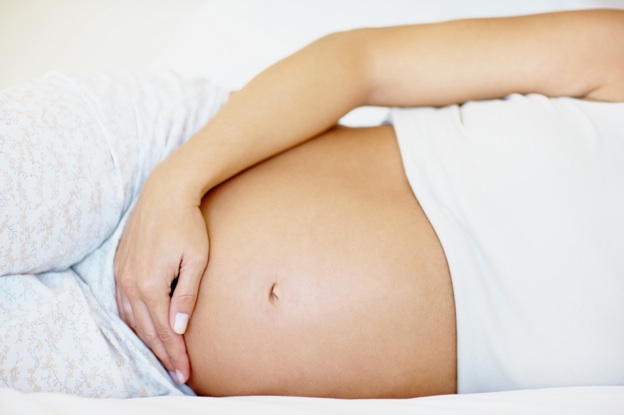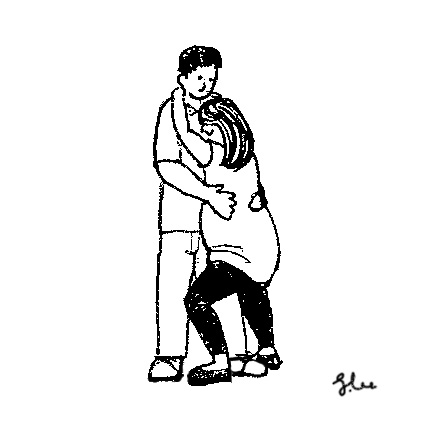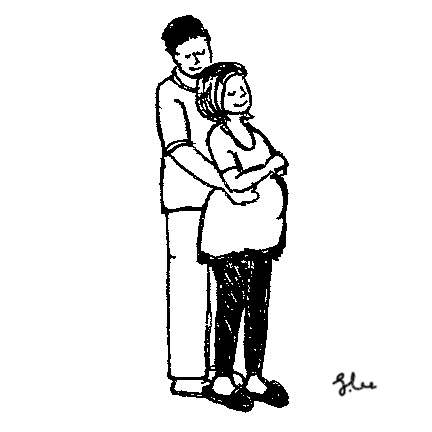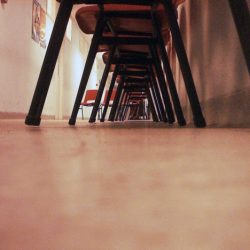SingaporeMotherhood | Pregnancy
August 2012
Push, Mama, Push! Positioning for Labour & Birth

Think of labour and what comes to mind is, more often than not, the image of a woman on her back, hands over her belly, legs splayed. Labour can, however, take place in a variety of positions. Here are some you may wish to experiment with:
Sitting upright

This is a good resting position and provides some gravity advantage in helping the baby descend. It also allows you to move easily into a side-lying position, which is a good resting position. If you do not like sitting on the floor, some hospitals provide birthing stools, chairs or birth balls for use during delivery.
[banner][/banner]
Sitting, leaning forward with support

Straddling a chair while leaning against a pillow or blanket against the chair back helps to relieves backache. It also sets you up in a good position for getting a back massage from your partner. There is some gravity advantage in helping the baby descend.
Hands and knees

This is a great position for relieving backache. Getting down on all fours helps your baby to fall forward, taking the pressure off your spine and haemorrhoids. It further assists the rotation of your baby into a favourable position for birthing. Combine this with pelvic rocking, body movements and long deep breaths to manage your contractions. While it may seem like an unorthodox position for delivery, this position may actually help maximise oxygen to your baby during pushing.
Kneeling, leaning forward with support

This offers the same benefits as the hands and knees position but creates less strain on your wrists and hands. A birth ball (or a large exercise ball) is a most versatile piece of equipment to have around during childbirth. If this is unavailable, you can also lean on a chair seat.
Lunging or leaning forward with support

Leaning with the help of a chair or a piece of furniture relieves backache and is a good position for a back rub. It is also more restful than standing upright. Bring one leg forward to the lunge position and this helps to widen the side of pelvis toward which the mother lunges. Lunging encourages the baby’s rotation and can be done in a kneeling position.
Standing or walking

Standing lets gravity assist the baby’s descend during and between contractions. When the baby is well aligned with the angle of the pelvis, your contractions will be less painful and more productive. This, combined with walking, will help speed up a stalled labour. During contractions, it may help to lean against your partner or a wall.
Squatting

Squatting allows you to bear down more effectively. It opens your pelvis wider and allows your baby more room to rotate as he/she descends. Your partner can help support your weight in this position.
Slow dancing

Put on some relaxing music and sway to the beat. This position offers the same benefits as standing with an easy transition to assisted squatting. The dancing movement causes changes in your pelvic joints, thus encouraging the rotation and descent of the baby. Being embraced by your loved one or a doula also increases your sense of well-being. Your birth partner is also in a good position to exert some back pressure to relieve your back pain.
One last thing…
Finally, it is a good idea to try out these positions prior to your due date, especially for those that require your partner’s help. Don’t forget to tell your doctor beforehand that you want the freedom to get into different positions during labour and birth. Writing this into your birth plan will also serve as a reminder to vary your posture when the going gets tough.
Is there a best position? The answer is no. Try a few or try all. But you won’t know what you like until you give it a go!
Illustrations by Gwen Lee
All content from this article, including images, cannot be reproduced without credits or written permission from SingaporeMotherhood.
Follow us on Facebook, Instagram, and Telegram for the latest article and promotion updates.





